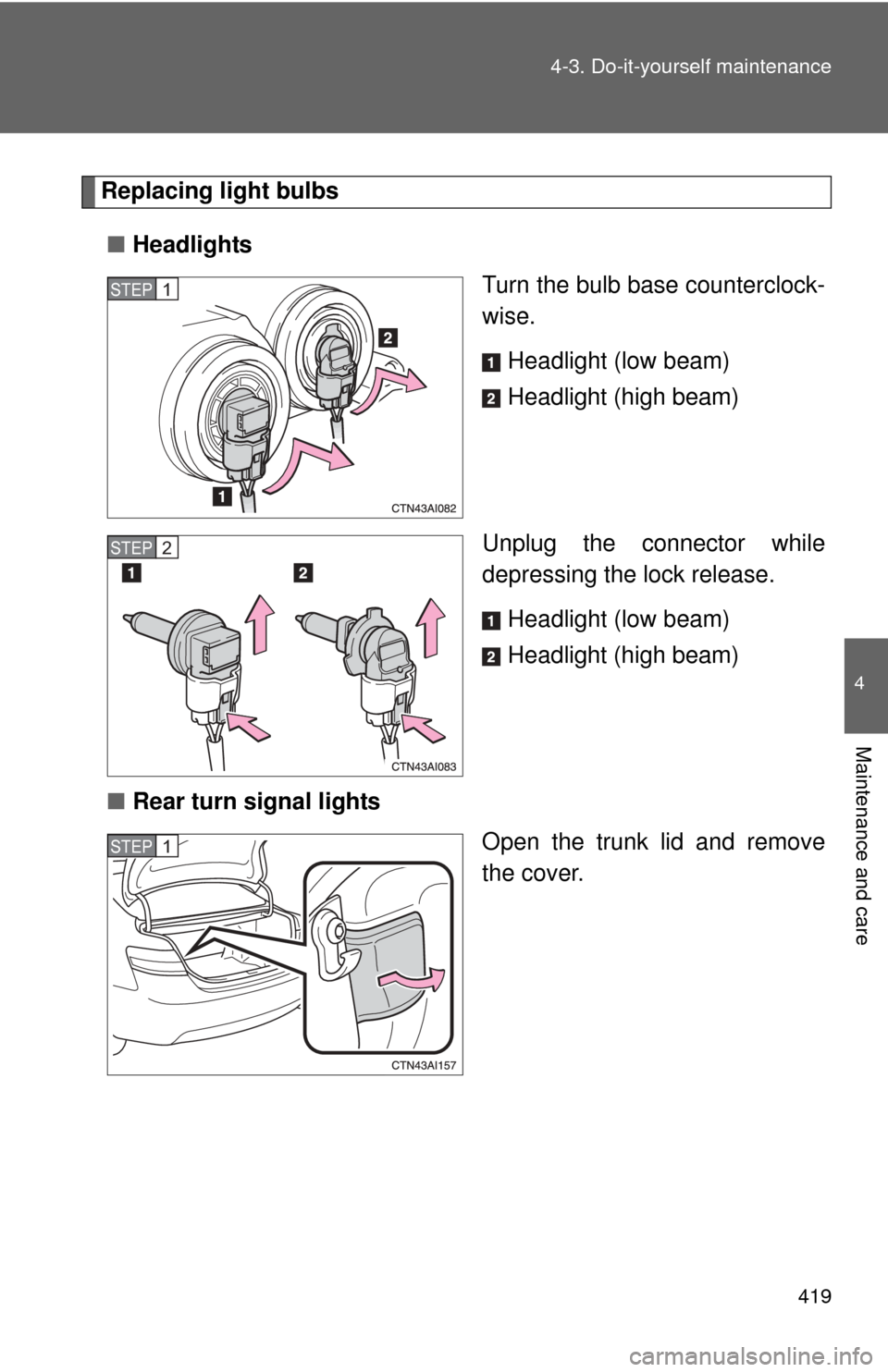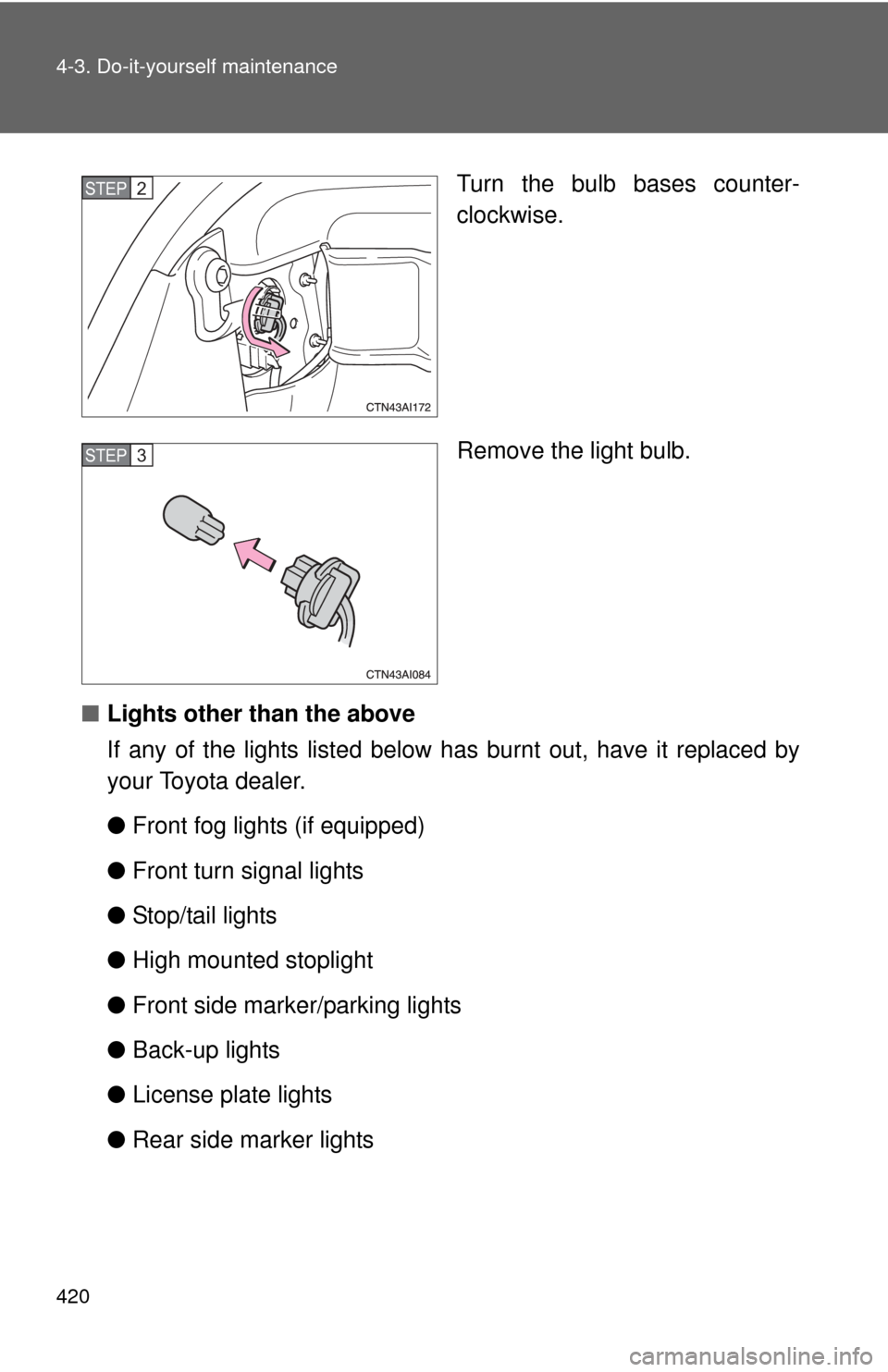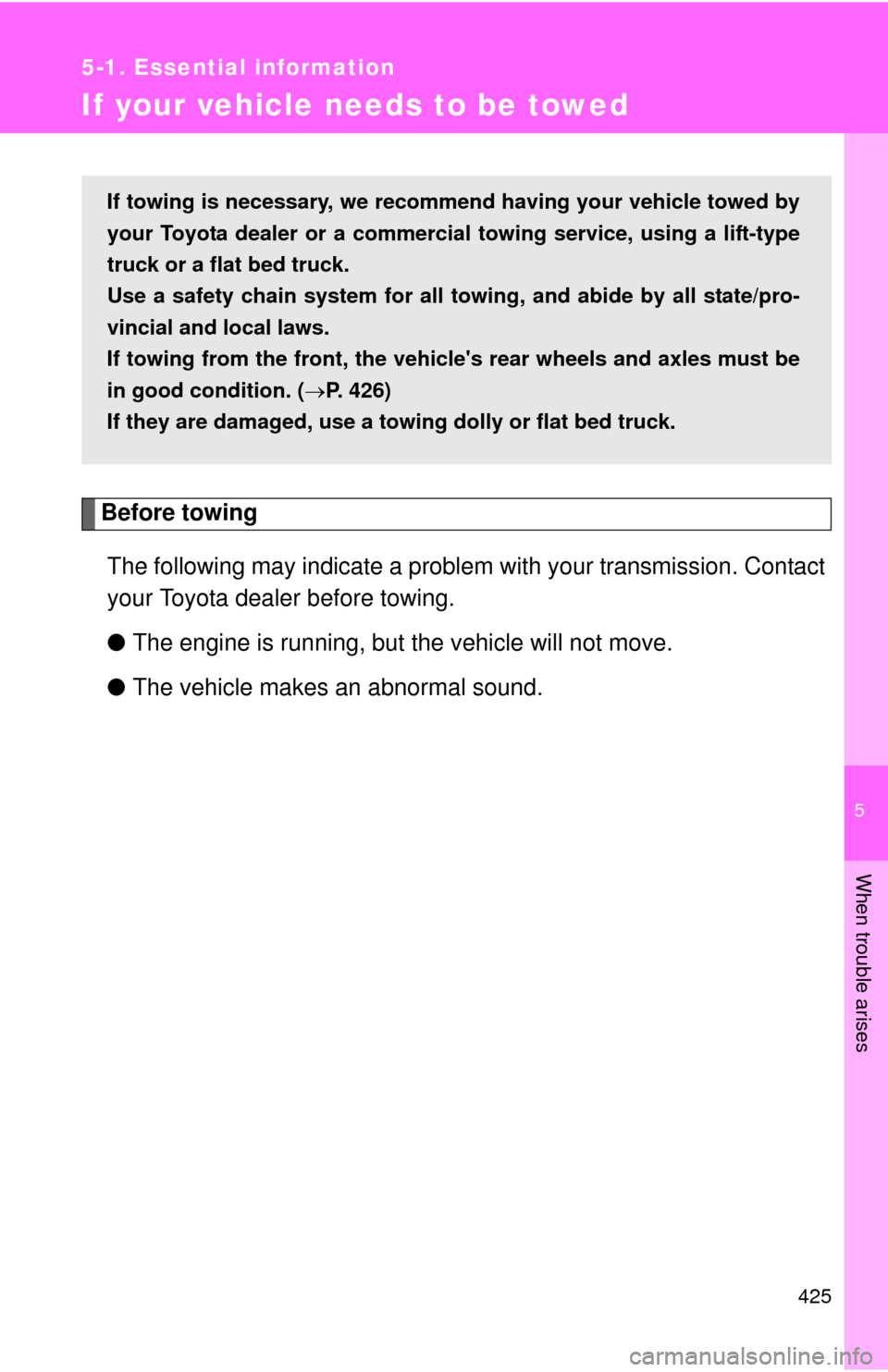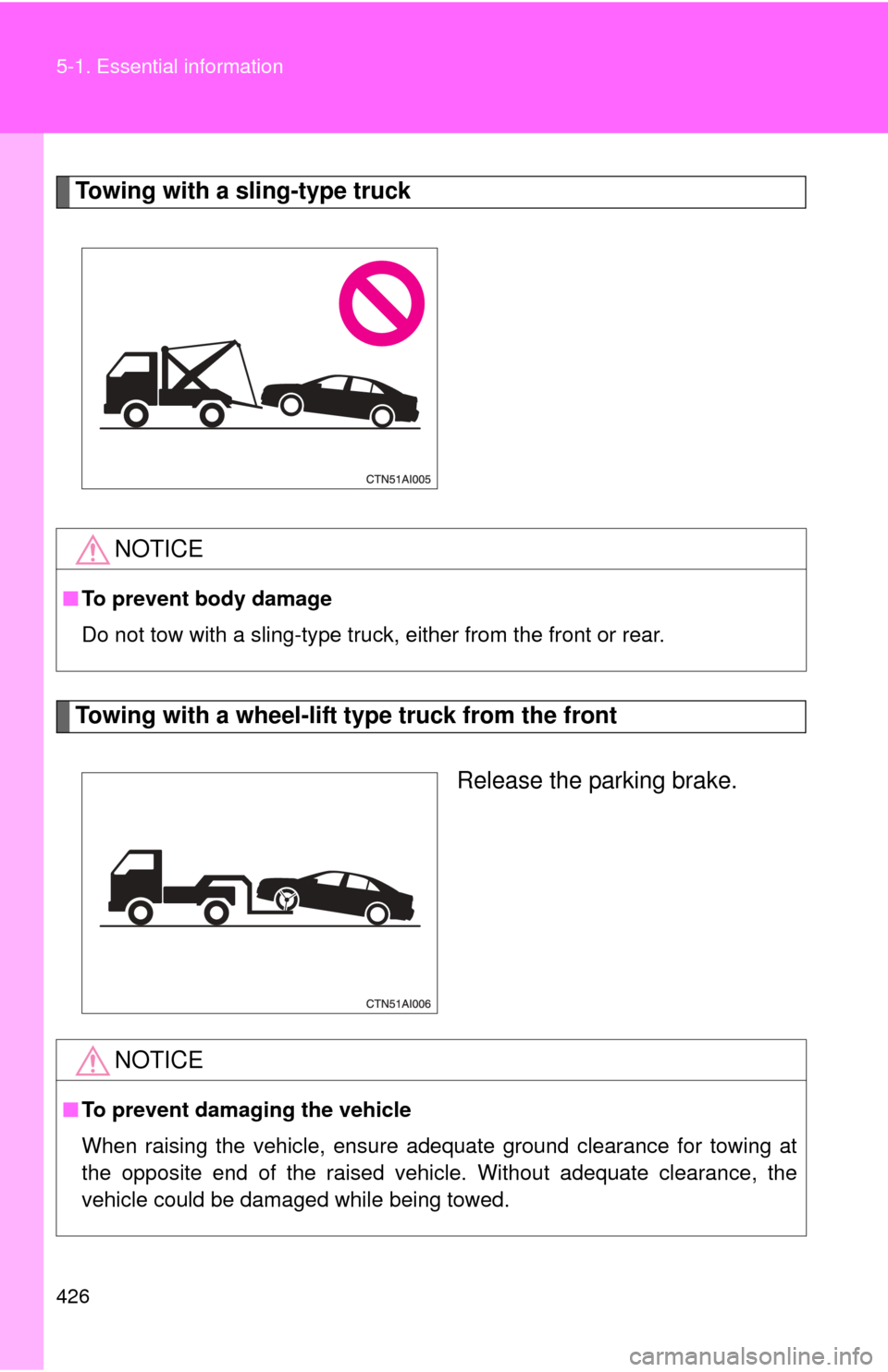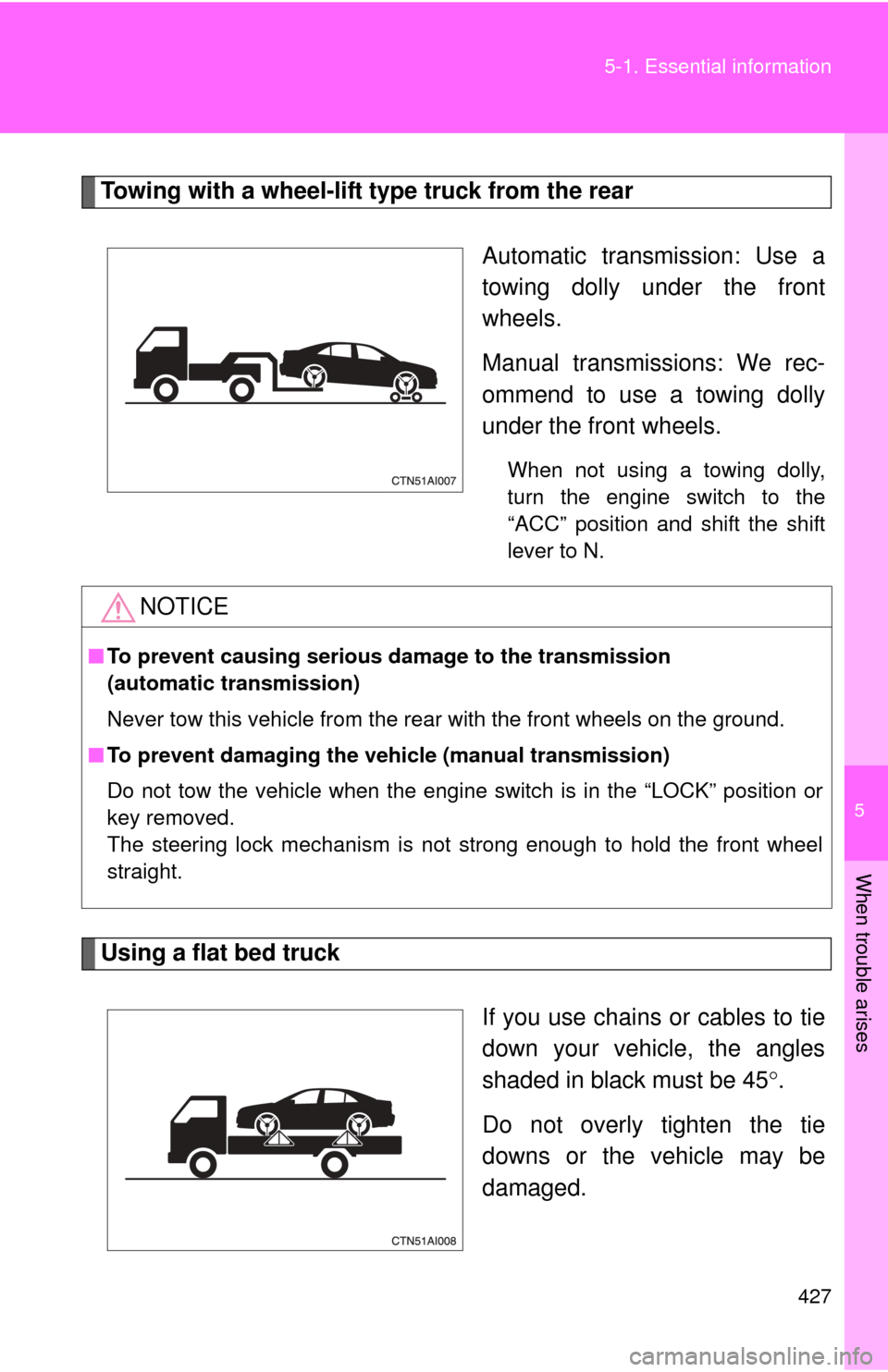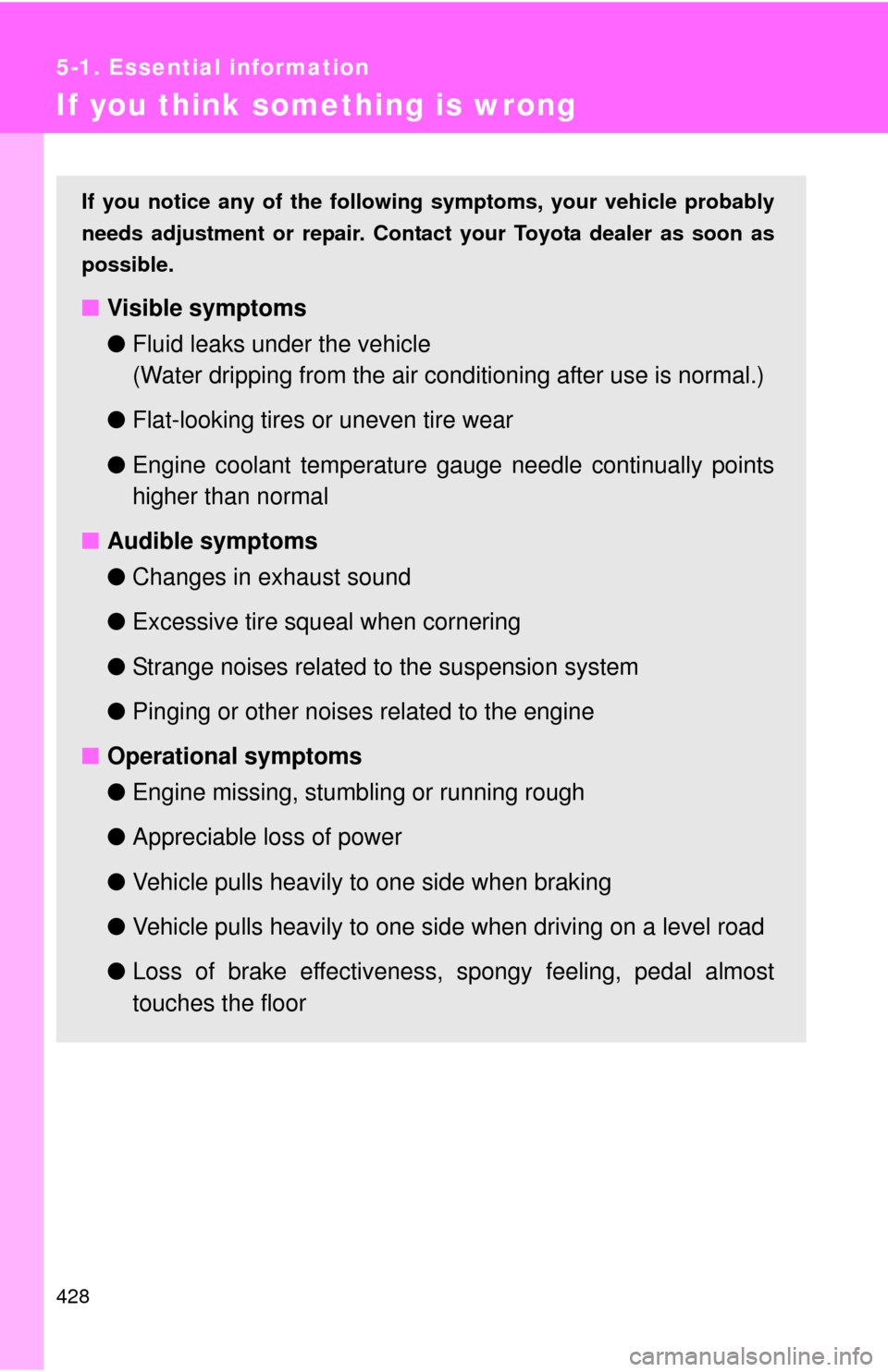TOYOTA CAMRY 2010 XV40 / 8.G Owners Manual
CAMRY 2010 XV40 / 8.G
TOYOTA
TOYOTA
https://www.carmanualsonline.info/img/14/6230/w960_6230-0.png
TOYOTA CAMRY 2010 XV40 / 8.G Owners Manual
Trending: oil dipstick, clutch, tire pressure reset, brake light, fuel pump, keyless, gasoline
Page 421 of 538
419
4-3. Do-it-yourself maintenance
4
Maintenance and care
Replacing light bulbs
■ Headlights
Turn the bulb base counterclock-
wise.
Headlight (low beam)
Headlight (high beam)
Unplug the connector while
depressing the lock release. Headlight (low beam)
Headlight (high beam)
■ Rear turn signal lights
Open the trunk lid and remove
the cover.
STEP1
STEP2
STEP1
Page 422 of 538
420 4-3. Do-it-yourself maintenance
Turn the bulb bases counter-
clockwise.
Remove the light bulb.
■ Lights other than the above
If any of the lights listed below has burnt out, have it replaced by
your Toyota dealer.
● Front fog lights (if equipped)
● Front turn signal lights
● Stop/tail lights
● High mounted stoplight
● Front side marker/parking lights
● Back-up lights
● License plate lights
● Rear side marker lightsSTEP2
STEP3
Page 423 of 538
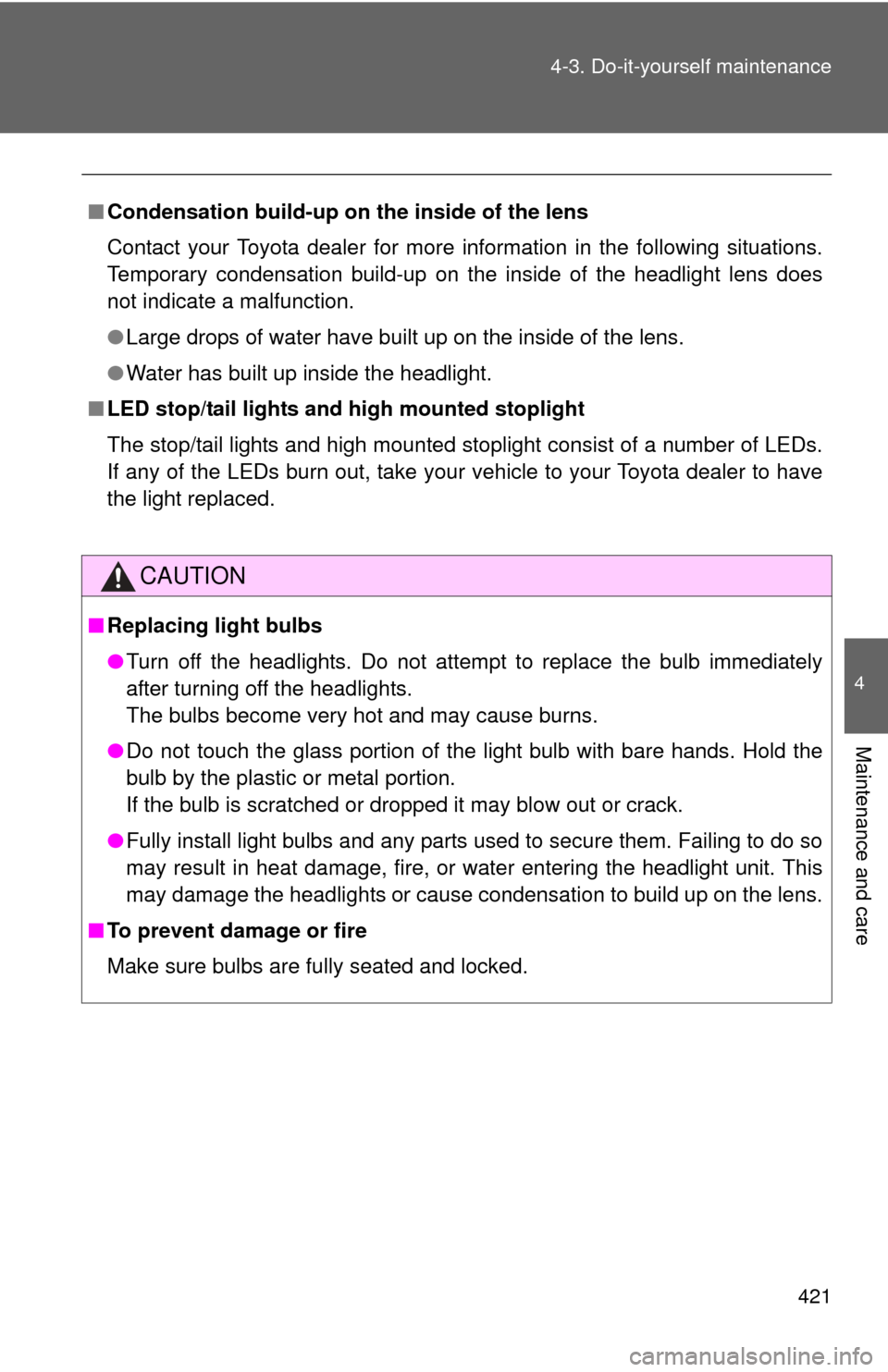
421
4-3. Do-it-yourself maintenance
4
Maintenance and care
■
Condensation build-up on th e inside of the lens
Contact your Toyota dealer for more information in the following situations.
Temporary condensation build-up on the inside of the headlight lens does
not indicate a malfunction.
● Large drops of water have built up on the inside of the lens.
● Water has built up inside the headlight.
■ LED stop/tail lights and high mounted stoplight
The stop/tail lights and high mounted stoplight consist of a number of LEDs.
If any of the LEDs burn out, take your vehicle to your Toyota dealer to have
the light replaced.
CAUTION
■Replacing light bulbs
●Turn off the headlights. Do not attempt to replace the bulb immediately
after turning off the headlights.
The bulbs become very hot and may cause burns.
● Do not touch the glass portion of the light bulb with bare hands. Hold the
bulb by the plastic or metal portion.
If the bulb is scratched or dropped it may blow out or crack.
● Fully install light bulbs and any parts used to secure them. Failing to do so
may result in heat damage, fire, or water entering the headlight unit. This
may damage the headlights or cause condensation to build up on the lens.
■ To prevent damage or fire
Make sure bulbs are fully seated and locked.
Page 424 of 538
422 4-3. Do-it-yourself maintenance
Page 425 of 538
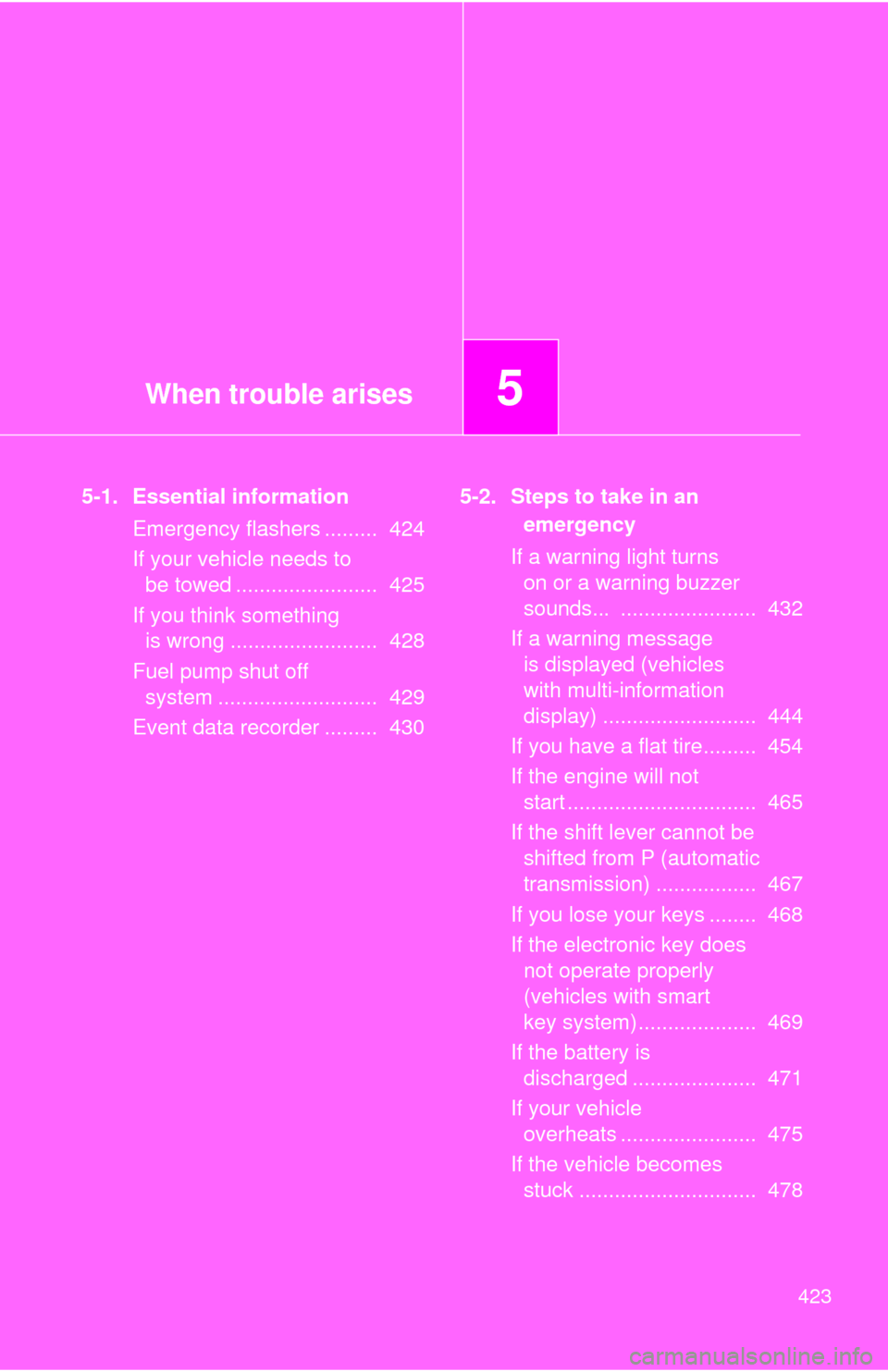
When trouble arises5
423
5-1. Essential informationEmergency flashers ......... 424
If your vehicle needs to be towed ........................ 425
If you think something is wrong ......................... 428
Fuel pump shut off system ........................... 429
Event data recorder ......... 430 5-2. Steps to take in an
emergency
If a warning light turns on or a warning buzzer
sounds... ....................... 432
If a warning message is displayed (vehicles
with multi-information
display) .......................... 444
If you have a flat tire......... 454
If the engine will not start ................................ 465
If the shift lever cannot be shifted from P (automatic
transmission) ................. 467
If you lose your keys ........ 468
If the electronic key does not operate properly
(vehicles with smart
key system).................... 469
If the battery is discharged ..................... 471
If your vehicle overheats ....................... 475
If the vehicle becomes stuck .............................. 478
Page 426 of 538
424
5-1. Essential information
Emergency flashers
NOTICE
■To prevent battery discharge
Do not leave the emergency flashers on longer than necessary when the
engine is not running.
Use the emergency flashers if th e vehicle malfunctions or is
involved in an accident.
Press the switch to flash all
the turn signal lights. To turn
them off, press the switch
once again.
Page 427 of 538
5
When trouble arises
425
5-1. Essential information
If your vehicle needs to be towed
Before towingThe following may indicate a problem with your transmission. Contact
your Toyota dealer before towing.
● The engine is running, but the vehicle will not move.
● The vehicle makes an abnormal sound.
If towing is necessary, we recommend having your vehicle towed by
your Toyota dealer or a commerci al towing service, using a lift-type
truck or a flat bed truck.
Use a safety chain system for all to wing, and abide by all state/pro-
vincial and local laws.
If towing from the front, the vehic le's rear wheels and axles must be
in good condition. (P. 426)
If they are damaged, use a towing dolly or flat bed truck.
Page 428 of 538
426 5-1. Essential information
Towing with a sling-type truck
Towing with a wheel-lift type truck from the frontRelease the parking brake.
NOTICE
■To prevent body damage
Do not tow with a sling-type truck, either from the front or rear.
NOTICE
■To prevent damaging the vehicle
When raising the vehicle, ensure adequate ground clearance for towing at
the opposite end of the raised vehicle. Without adequate clearance, the
vehicle could be damaged while being towed.
Page 429 of 538
5
When trouble arises
427
5-1. Essential information
Towing with a wheel-lift type truck from the rear
Automatic transmission: Use a
towing dolly under the front
wheels.
Manual transmissions: We rec-
ommend to use a towing dolly
under the front wheels.
When not using a towing dolly,
turn the engine switch to the
“ACC” position and shift the shift
lever to N.
Using a flat bed truckIf you use chains or cables to tie
down your vehicle, the angles
shaded in black must be 45.
Do not overly tighten the tie
downs or the vehicle may be
damaged.
NOTICE
■ To prevent causing serious dama ge to the transmission
(automatic transmission)
Never tow this vehicle from the rear with the front wheels on the ground.
■ To prevent damaging the vehicle (manual transmission)
Do not tow the vehicle when the engine switch is in the “LOCK” position or
key removed.
The steering lock mechanism is not strong enough to hold the front wheel
straight.
Page 430 of 538
428
5-1. Essential information
If you think something is wrong
If you notice any of the following symptoms, your vehicle probably
needs adjustment or repair. Contact your Toyota dealer as soon as
possible.
■ Visible symptoms
●Fluid leaks under the vehicle
(Water dripping from the air cond itioning after use is normal.)
● Flat-looking tires or uneven tire wear
● Engine coolant temperature g auge needle continually points
higher than normal
■ Audible symptoms
●Changes in exhaust sound
● Excessive tire squeal when cornering
● Strange noises related to the suspension system
● Pinging or other noises related to the engine
■ Operational symptoms
●Engine missing, stumbling or running rough
● Appreciable loss of power
● Vehicle pulls heavily to one side when braking
● Vehicle pulls heavily to one side when driving on a level road
● Loss of brake effectiveness, s pongy feeling, pedal almost
touches the floor
Trending: interior lights, fuel cap, fuel cap release, overheating, wheel, child seat, length
